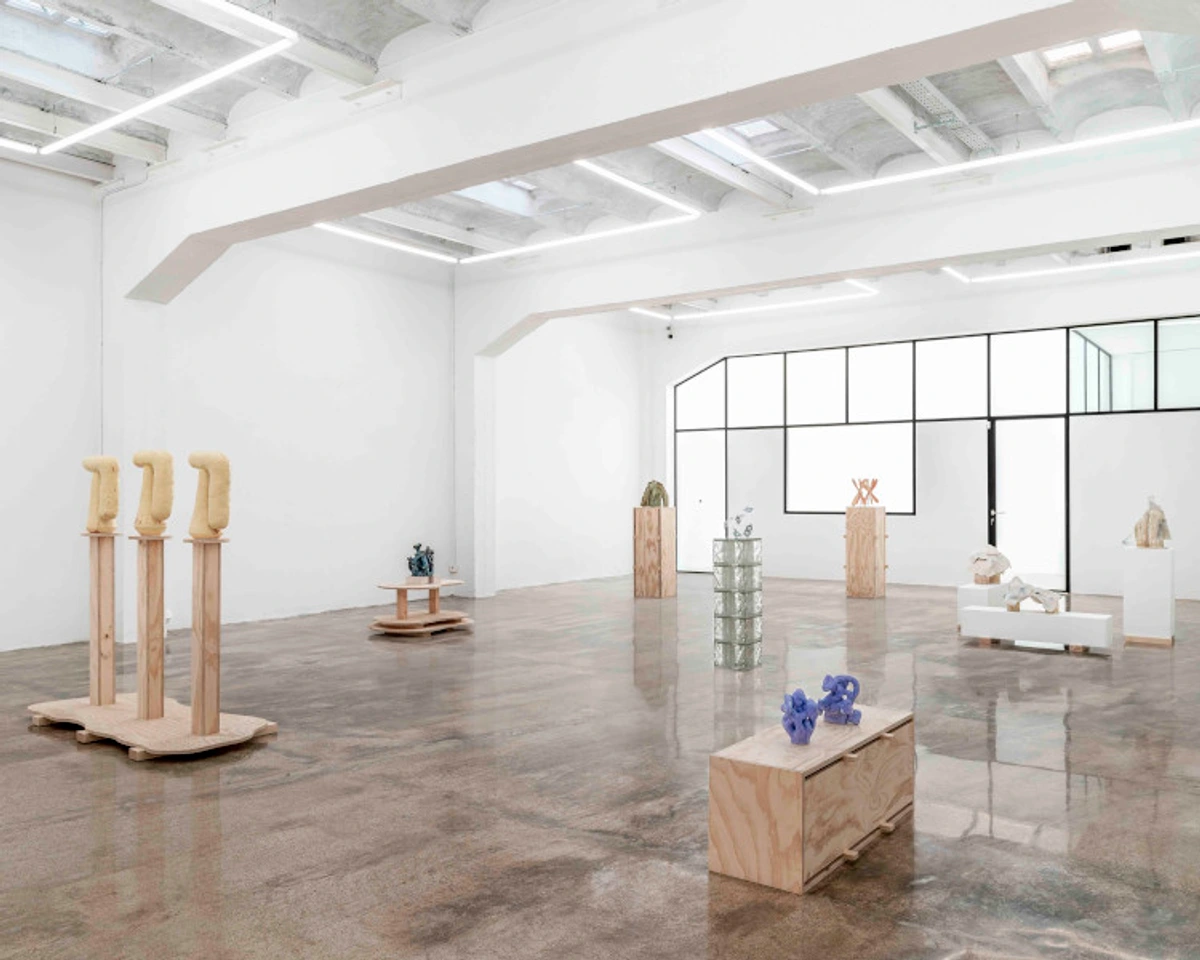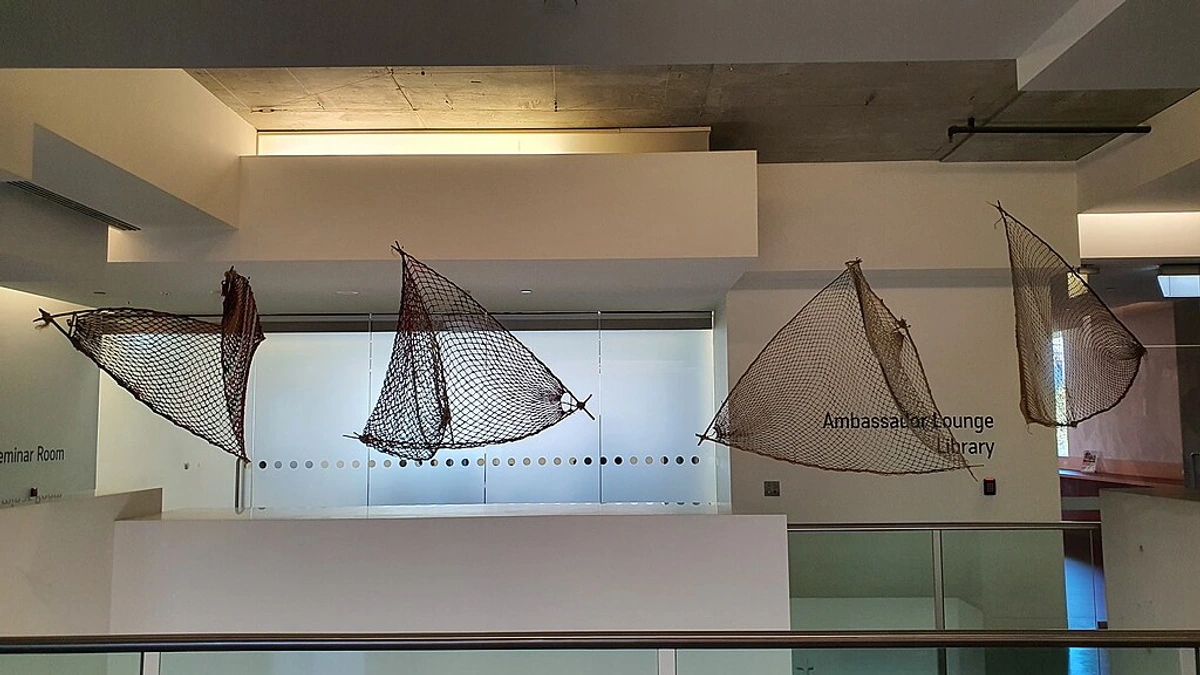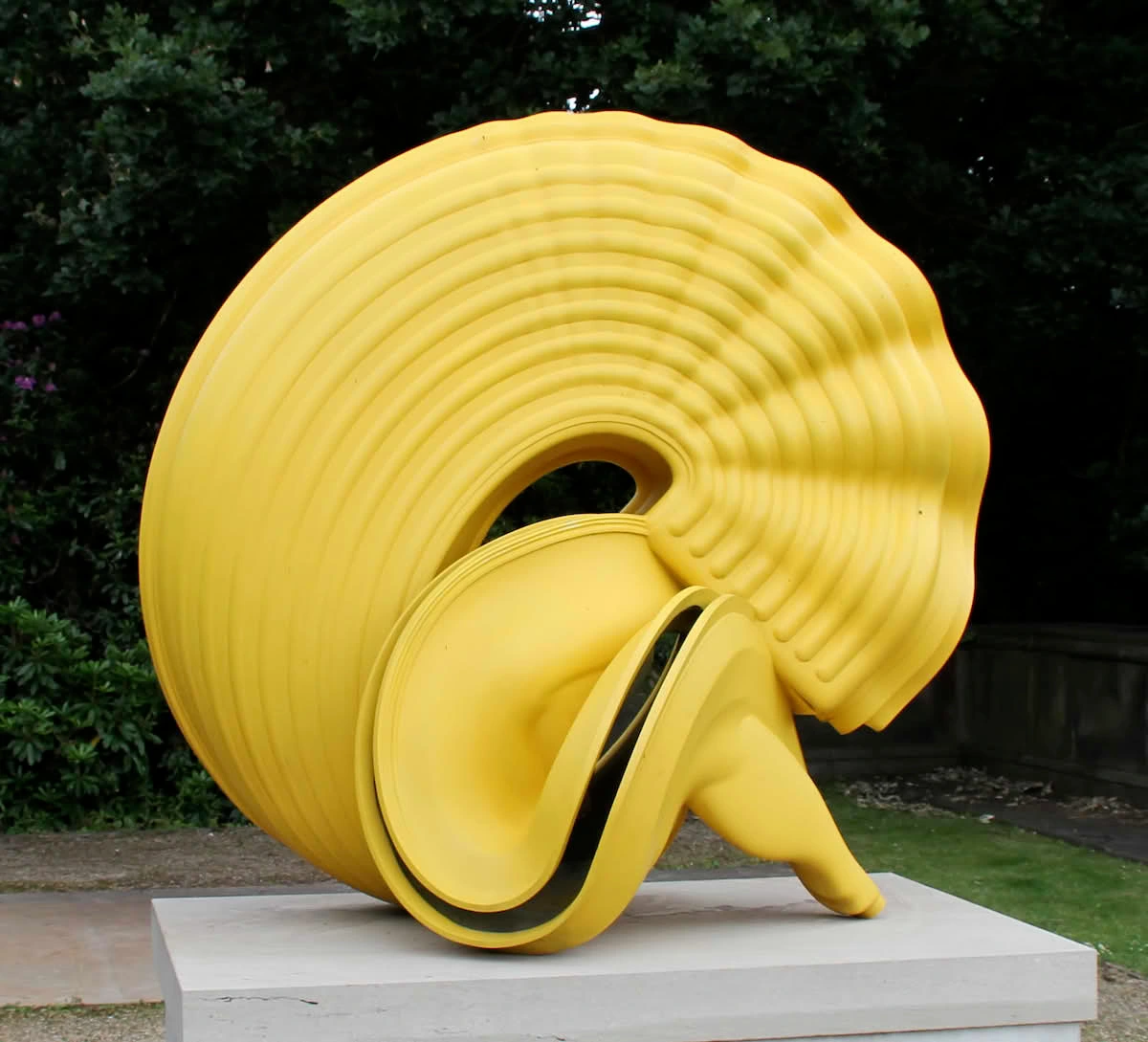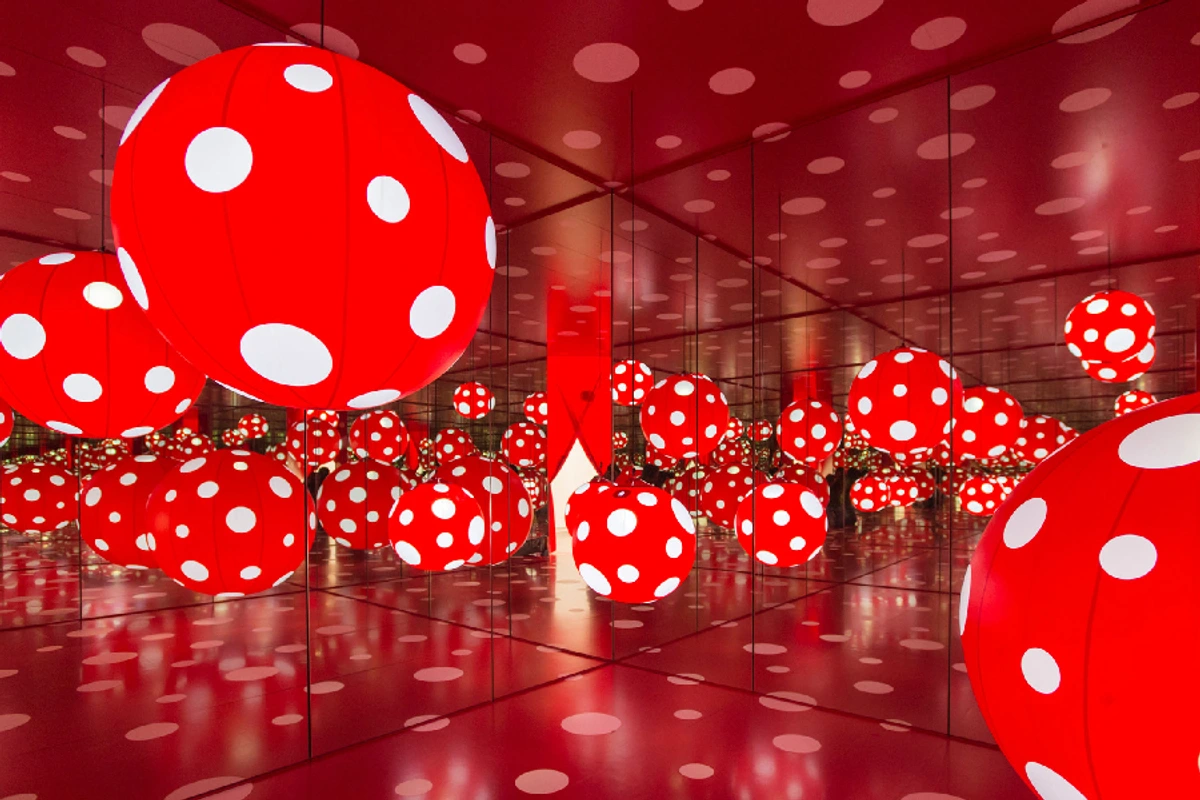
Sculpting Space: My Intimate Guide to Displaying Abstract Sculptures and Mixed Media
An intimate guide to displaying abstract sculptures and mixed media, covering placement, lighting, scale, and integration into your home.
Sculpting Space: My Intimate Guide to Displaying Abstract Sculptures and Mixed Media
There's a curious kind of art that doesn't just hang politely on a wall; it demands space, breathes, and sometimes, frankly, leans a little too far into your personal bubble. I’m talking about abstract sculptures and mixed media pieces – the kind that practically leap off the wall, or sometimes, literally spill onto the floor. I recall once bringing home a particularly ambitious, kinetic piece that ended up occupying my entire dining table for two weeks while I pondered its volumetric demands. It felt less like art placement and more like trying to coax a lively, opinionated relative into finding their comfortable spot in your home. This isn't just about hanging art; it's about curating a conversation with a piece that has its own volumetric presence, its own shadows, its own secrets. But how do we truly give these pieces the space they demand, allowing them to whisper their stories, or perhaps, shout them?
Why Sculptures and Mixed Media are Different (and Wonderful)
They're not just something to look at; they're something to experience. I find myself walking around them, catching new angles, seeing how the light shifts, how the textures change under my gaze. It's a dynamic dialogue. For me, as an artist, choosing to work in three dimensions or incorporate diverse materials into mixed media isn't just a whim; it's a deliberate act of liberation from the flat canvas, a way to explore new conversations with space and light, and sometimes, simply to embrace the raw, tactile language of the world around us. There was this one piece, a kinetic mobile crafted from recycled metals, that in my studio, looked one way, but when I took it home and hung it near a window, the changing afternoon light transformed it into a new, shifting entity every hour. It was a constant revelation. With abstract paintings, the conversation is often on the surface, a visual feast. But with sculpture and mixed media, there's depth, real shadow, tangible texture from materials like raw wood, unpolished metal, tactile ceramics, or woven fibers, and sometimes even the subtle hum of materials that you can almost feel in the air—like the faint, almost imperceptible whir of a kinetic mobile or the resonant silence of a perfectly balanced stone stack. If you've ever delved into the world beyond the brush, exploring mixed media in contemporary abstract art, you know what I mean. It's about pushing boundaries, and that applies to display too.
Aspect | Flat Art (e.g., painting) | 3D Art (Sculpture/Mixed Media) |
|---|---|---|
| Interaction | Primarily visual, static | Dynamic, multi-angle experience |
| Space Use | Two-dimensional | Volumetric, demands surrounding space |
| Light Impact | Illuminates surface | Creates dynamic shadows & depth |
| Texture | Visual illusion | Tangible, often varied materials |

The Art of Placement: Beyond the Pedestal
I'll admit, there's been many a time I've brought a new, intriguing piece home and just stared at it, utterly stumped. "Where does this... thing... go?" My first instinct is often a pedestal, but that's like putting a vibrant bird in a tiny cage. These pieces crave freedom and thoughtful integration.
Embracing Negative Space
It's tempting to cram art into every available nook. I confess, early on, I thought more art equaled more impact, and often found myself trying to cram pieces into every corner. I recall one particularly busy bookshelf where I tried to tuck a small, delicate ceramic sculpture. It wasn't until a friend politely (and accurately) observed, 'It looks like it's trying to escape,' that I realized I'd turned art display into a game of Tetris, with the sculpture utterly lost amidst the visual noise. But with abstract sculpture, the space around it is just as crucial. It's the silent participant, the breath that allows the artwork to sing. A minimalist approach can often elevate these pieces, letting their unique form truly command attention. I've found that less is often more, creating a deliberate visual pause. Imagine a delicate wire sculpture against a stark, empty wall – the emptiness becomes part of its form, making the air around it feel like a tangible element. You can explore more about this concept in a minimalist approach to displaying art or delve into the role of negative space in abstract art.
Lighting is Everything
Oh, the drama of a perfectly lit sculpture! It's not just about illumination; it's about creating shadows that dance and shift, becoming part of the artwork itself. A well-placed spotlight can transform a static piece into a living entity as the day progresses. I remember once trying to light a textured metal sculpture from directly above, only to flatten all its fascinating contours, turning drama into flatness. It was then I realized how much a piece of art can change, just by the light hitting it differently, much like my own many moods throughout the day. Experiment with side lighting to emphasize texture and form, or backlighting to create dramatic silhouettes that make the piece pop from its background.
For me, the key is experimentation. I often use:
- Adjustable track lighting: This allows me to easily direct light, creating various shadow plays.
- Uplighting: Placing a light source below a sculpture can create dramatic, elongated shadows and emphasize its verticality.
- Warm vs. Cool LEDs: Warm light can evoke a cozy, intimate feel, while cooler light offers a crisp, modern look, each altering the artwork's perceived mood. (And speaking of mood, remember that light temperature, measured in Kelvin (K), profoundly impacts how colors and textures are perceived – a cooler 4000K might make a metal sculpture gleam, while a warmer 2700K could enhance the richness of a wooden piece.)
- Natural Light: While direct sunlight is a no-go for many pieces due to fading risks (a lesson I learned with a vibrant textile that once sat too close to a sun-drenched window, losing some of its initial pop), thoughtful use of diffused natural light can bring a sculpture to life, changing its appearance throughout the day. Consider sheer curtains or strategic placement away from direct rays.
A quick, personal note: while light is vital, be mindful of direct, prolonged sunlight, especially for pieces with delicate pigments, textiles, or organic materials, as it can cause fading or degradation. Sometimes, love means protecting them from the sun's harsh gaze. Want to see how dramatic a difference it makes? Grab your phone flashlight and move it around a sculpture from different angles – you’ll be amazed at the new stories the shadows tell!
The Unexpected Mount
Who says art has to sit on a surface or hang flat on a wall? My personal favorite displays are often those that defy gravity or blend seamlessly into the environment. Think suspended pieces, installations that spill onto the floor, or sculptures integrated with furniture. These approaches don't just display art; they surprise the viewer, create a sense of lightness or dynamic movement, and truly integrate the art into the living space, making it feel less like a static object and more like an extension of the room's energy. It takes a bit of courage, and sometimes a very patient ceiling (and professional installers for heavier pieces!) – and the realization that my ceiling probably isn't rated for that much artistic ambition, proving that sometimes, even my 'inspired' experiments need a professional's touch and proper hardware. This always reminds me of some of the incredible, boundary-pushing installations you see in contemporary museums. Lightweight materials like sleek acrylic risers that seem to disappear, transparent fishing line for a floating effect (if the piece is light enough!), or custom-fabricated tension rods for a more robust yet subtle hold can be surprisingly versatile for these unexpected placements. For any piece that feels precarious, or when you're doubting the structural integrity of your wall or ceiling for a heavier artwork, always consult with a professional art installer or structural engineer. It’s not just about protecting the art, but ensuring everyone’s safety.

Understanding Scale and Proportion
One of the biggest lessons I've learned is that a piece of art, no matter how magnificent, needs to be in conversation with its surroundings. A monumental sculpture needs ample breathing room, a wide expanse where it can be appreciated from all angles without feeling cramped. Conversely, a small, intricate piece might get utterly lost in a vast, empty space. Beyond physical size, there's also the concept of visual weight – how much a piece draws the eye. A small, intricately detailed piece with bold colors can have immense visual weight, requiring just as much consideration for its surroundings as a physically larger, but visually lighter, transparent sculpture. It's about finding that sweet spot, where the artwork feels perfectly at home, neither dwarfed nor overwhelming. Sometimes, the right scale means a piece stands alone, a singular statement. Other times, it means it's part of a larger curated vignette, a dialogue among objects, and even a collection of smaller, thoughtfully grouped pieces can collectively create a powerful, singular statement, defying their individual size.
Before making a permanent decision, I often use painter's tape to mark out the approximate dimensions of a larger piece on the wall or floor, or even cut out a cardboard 'ghost' of the sculpture. It's surprisingly effective for visualizing how it will truly occupy the space. Take photos from different distances and angles as well – a fresh perspective, even from a camera lens, can reveal insights you might miss with the naked eye.

If you're still wondering how to integrate these unique pieces into your abode, exploring how to display different types of art in your home can offer a broader perspective on creating engaging displays.
Mixed Media Magic: Layered Stories
Moving from the grand statement of sculpture to the intimate narratives of mixed media feels like stepping into a secret garden. Where sculpture often commands a space with its presence, mixed media pieces frequently invite a closer, more personal dialogue, almost like stepping into a secret diary made public. There are layers, textures, often unexpected materials telling a story that unfolds the closer you get. It’s less about one grand statement and more about a collection of whispered narratives, tiny discoveries waiting to be made.
Shadow Boxes and Curiosities
For smaller, more delicate mixed media pieces, especially those with intricate 3D elements, a shadow box isn't just a frame; it's a stage. It protects, highlights, and creates its own little world, inviting you to peer in and decipher its secrets. For a small, intricate piece I own, crafted from layered paper and dried botanicals, a shadow box felt like creating a miniature museum, preserving its delicate narrative while inviting close inspection. (These miniature worlds, reminiscent of Victorian curiosity cabinets or natural history displays, invite a different kind of contemplation, bridging art and the tradition of collecting wonders.) You can dive deeper into the role of shadow boxes in displaying art if you're curious about creating these miniature worlds.
But what about those mixed media pieces that yearn for more openness? Many contemporary mixed media pieces, particularly those incorporating collage, textiles, or shallow relief, shine when simply wall-mounted, sometimes with subtle standoffs to give them a slight float, emphasizing their layered depth. Others are perfect for tabletop display, inviting tactile interaction, perhaps under a subtle cloche to protect delicate elements while still allowing exploration.

Integration vs. Isolation
Should your mixed media piece scream for attention, or subtly blend into its surroundings? Honestly, it depends on the art and my mood. Sometimes, a piece needs to be the absolute focal point, demanding all eyes. Take a bold, abstract textile piece I once acquired: it screamed for attention, demanding a stark, empty wall to itself. Other times, I want it to be a quiet discovery, a texture or form that you notice only when you're truly present in the space. But a more subtle mixed media collage with found objects... it thrived nestled among books and other curiosities, becoming a quiet discovery. To achieve integration, I might consider matching the piece's dominant color palette with accents in the room, or grouping it with other decor items that share a similar texture or theme. For isolation, a dedicated, minimalist wall with precise spotlighting, or a quiet alcove, can make the piece the sole focus, inviting deep contemplation. It's a delicate dance between making a statement and inviting intimacy. Ultimately, the choice between integration and isolation comes back to that initial feeling the piece evokes. Does it demand quiet contemplation, best achieved through isolation? Or does it spark a vibrant dialogue, calling for integration within a larger, curated narrative of objects?
My Intuitive Dance with Three-Dimensional Art: A Personal Approach
When it comes to my own art, or selecting pieces for my space, there’s no rigid rulebook. It’s more like a feeling, a gut instinct. I often think about my journey as an artist, visible in my timeline, and how each phase brought new perspectives on display, evolving with each creative breakthrough.
Start with a Feeling
Before I even think about where it goes, I sit with the piece. How does it make me feel? Does it inspire calm, energy, contemplation? The display should amplify that feeling, not detract from it. If it’s a vibrant, chaotic sculpture, I might give it a clean, quiet backdrop to let its energy explode. A particularly jagged, energetic sculpture made from reclaimed metal, for instance, screamed 'movement' to me. I instinctively placed it not in a quiet corner, but in a high-energy transition zone near my studio entrance, where its dynamic form could truly explode, rather than in a serene reading nook where it would feel stifled. If it’s serene, I might place it somewhere I can sit and simply be with it. It’s about listening to the art.
The "What If" Game
This is where the fun (and sometimes frustration) begins. "What if I put it here? What if I turn it upside down? What if it dangles from the ceiling instead of standing?" I literally move pieces around, hold them up, try different angles. It's playful, experimental, and essential. My museum in 's-Hertogenbosch has seen many such 'what if' experiments over the years, often leading to unexpected and delightful solutions! I once spent an entire afternoon moving a particularly stubborn steel piece around, convinced it belonged on a wall, only to find its true home, surprisingly, nestled amidst a collection of books.
Don't Be Afraid to Break Rules (or Buy New Art)
The biggest mistake you can make is thinking there's a "right" way. There isn't. Your space, your art, your rules. I once dismissed the idea of placing a delicate, translucent glass sculpture on a busy bookshelf, convinced it would get lost. But then I tried it, tucked among my oldest, most worn books, and suddenly the contrast made both the glass and the books sing in a completely unexpected harmony. Sometimes, the 'wrong' placement is exactly right. And if you find yourself falling in love with a piece that seems impossible to display, take the plunge! The challenge often sparks the most creative solutions. Embrace the 'what ifs,' the awkward placements that somehow feel right, and the beautiful mess of finding perfect harmony. It’s your space, your rules, and your unique story unfolding. Curating your space: how abstract art elevates modern interiors is all about that journey. And hey, if you're looking for unique pieces that defy convention, you know where to buy them.
FAQs: Practicalities of Living with Abstract 3D Art
Still pondering the nitty-gritty? Here are some practical questions that often pop into my mind, and perhaps yours too, when contemplating living with these wonderful, complex creations.
- Q: How important is the background color or texture when displaying abstract 3D art?
- A: Incredibly important! The background is effectively part of the composition. A vibrant, colorful sculpture might pop dramatically against a neutral, minimalist wall, allowing its forms to truly dominate. Conversely, a subtle, textural piece might blend beautifully, or even be enhanced, by a background with a complementary texture, like exposed brick or a rich fabric. It's about creating a harmonious or intentionally contrasting dialogue. I often see people overlooking this, but it can make or break a display!
- Q: How can I display multiple abstract sculptures or mixed media pieces together effectively?
- A: Grouping can create powerful vignettes. Consider themes (material, color, form), or create a narrative. You might group pieces of varying heights on a single surface, or create a 'conversation' between a wall-mounted piece and a floor sculpture. The key is to leave enough negative space around each piece within the group to allow it to breathe, and to ensure the overall arrangement tells a cohesive story, whether one of harmony or playful contrast. It's a miniature exhibition in itself.
- Q: How do I clean abstract sculptures and mixed media?
- A: This largely depends on the materials! For durable pieces (metal, stone, certain plastics), a soft cloth and mild soap (if safe for the material) might suffice. I once almost learned the hard way that a wrong cleaner could dull a perfectly patinated surface! For delicate mixed media, often just a soft brush or compressed air is best to avoid damaging intricate parts. A quick tip: regular, gentle dusting with a soft, clean brush (like a makeup brush) can prevent dust buildup, reducing the need for more intensive cleaning later on. Always test any cleaning method on an inconspicuous area first. And for delicate or patinated pieces, wearing clean cotton gloves can prevent oils from your skin from transferring and potentially damaging the surface. Always check with the artist or gallery for specific care instructions. Also consider the environment: excessive dust, humidity, or direct sunlight can degrade some materials over time, so careful placement is also part of "cleaning."
- Q: Can abstract sculptures be displayed outdoors?
- A: Some can, absolutely! But not all. Materials like certain metals (e.g., bronze, stainless steel), stone, and outdoor-grade resins are typically fine. Wood, textiles, and many glues/paints used in indoor mixed media would deteriorate quickly. For outdoor sculptures, also consider proper drainage to prevent water accumulation, especially in crevices or bases, which can lead to material degradation or unwanted biological growth over time. And a crucial point for valuable outdoor pieces: security. Ensure they are properly anchored to prevent theft or accidental tipping, especially in public-facing gardens or yards. If you're considering outdoor display, look for art specifically designed for it, or explore tips on protecting outdoor sculptures from weather.

- Q: Can I display abstract sculptures and mixed media alongside traditional art?
- A: Yes, and I'd argue it often creates the most dynamic and interesting spaces! I’ve seen a classical portrait truly sing when placed next to a deconstructed mixed media piece, creating a fascinating dialogue across centuries and artistic approaches. The contrast can highlight elements in both traditional and abstract pieces that you might otherwise miss. It's about creating a conversation between diverse forms and styles. Trust your eye and go with what feels right. Think of it as building a contemporary art for home collection that tells your unique story.
- Q: How do I secure larger or top-heavy sculptures?
- A: This is crucial, especially in homes with children or pets. For heavier pieces, consider museum wax or earthquake putty for stability on pedestals or shelves. As an initial preventative measure, always consider placing valuable or precarious pieces away from high-traffic areas or spots where they might be accidentally bumped. Before placing any heavy sculpture, always check the weight limits of your shelves, furniture, or the floor itself to prevent damage to both the art and your home. For very large or precarious sculptures, professional installation involving wall anchors, floor mounts, or custom bases is highly recommended to prevent accidents. Never compromise on safety. This is one area where my 'what if' game stops – safety first!
- Q: What about displaying abstract art in small spaces?
- A: Small spaces require creative thinking!
- Wall-mounted 3D pieces: They utilize vertical space without occupying floor area.
- Suspended art: If ceiling height allows, this can create a floating effect.
- Shadow boxes: Perfect for intricate, smaller mixed media on shelves or small wall sections.
- Strategic lighting: Can make a smaller piece feel more significant.
- Consider strategic use of mirrors: A well-placed mirror can not only reflect light and expand the perceived space but also offer new, unexpected angles of your sculpture, making a smaller piece feel grander.
- Remember, even a small piece needs negative space around it to breathe and truly stand out in a compact setting.
- Q: Should I rotate my art collection?
- A: Absolutely, if you have the space and inclination! Rotating pieces periodically can refresh a room's aesthetic, allow you to appreciate different artworks more deeply, and even protect sensitive pieces from continuous exposure to light. It's like curating a mini-exhibition in your own home, giving each piece its moment in the spotlight.
- Q: Where can I find or commission abstract sculptures and mixed media?
- A: Beyond browsing galleries or online platforms (like my own buy page!), consider local art fairs, university art programs, contacting artists directly for commissions, or even exploring artist studios and open studio events. These provide a fantastic opportunity to see art in its making, meet the creators, and often discover truly unique pieces. Many artists are open to creating custom pieces that perfectly fit your space and vision, offering a truly unique and personal connection to the art. I've always found the process of seeing a piece come to life, knowing it's specifically for my space, incredibly rewarding.
Conclusion
Displaying abstract sculptures and mixed media isn't just about finding a spot; it's an act of interpretation, a dialogue with the art, and a reflection of your own personality. It’s messy, it’s fun, and sometimes it's downright head-scratching. But when that piece clicks into place, when the light hits it just right, and it truly sings in its environment, there's nothing quite like it. It's a little triumph, a small moment of perfect harmony in a world that often feels anything but. It's an ongoing, intuitive dance of form and void, light and shadow, and ultimately, a powerful way to sculpt not just your space, but your very experience of living within it. So go on, experiment, play, and let your art truly live in your space, becoming an extension of you. I invite you to embark on your own sculpting journey, transforming your space into a living gallery that reflects your unique vision and passion for art. And if you have a display triumph (or a comical struggle!) you'd like to share, I'd love to hear about it on social media. After all, the journey of curating your space is a shared adventure.




